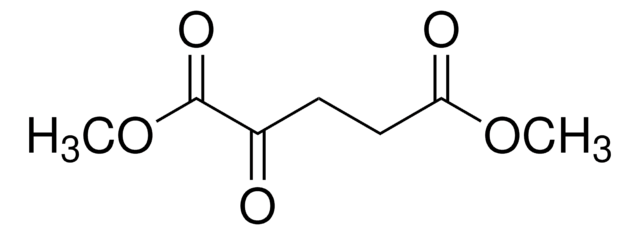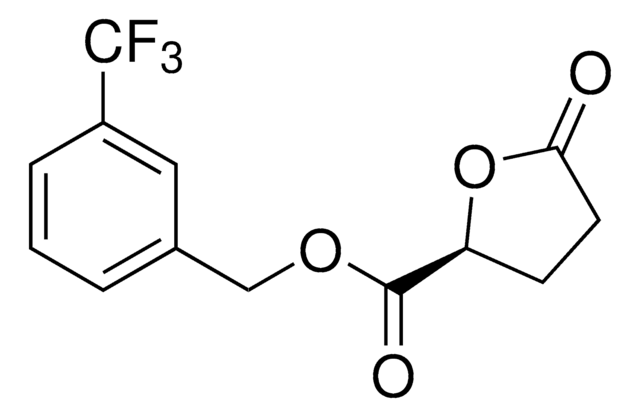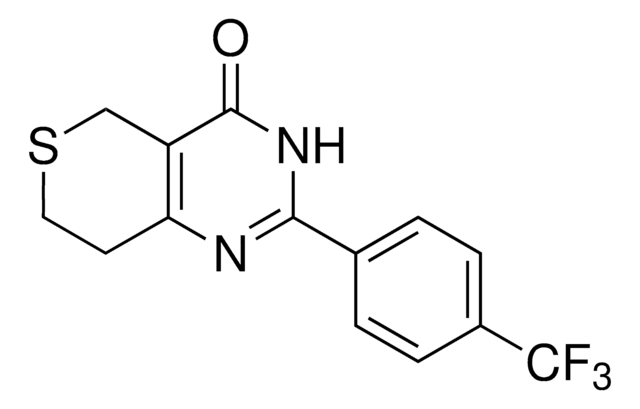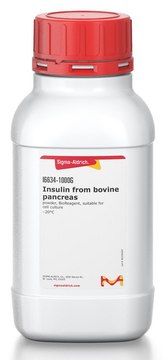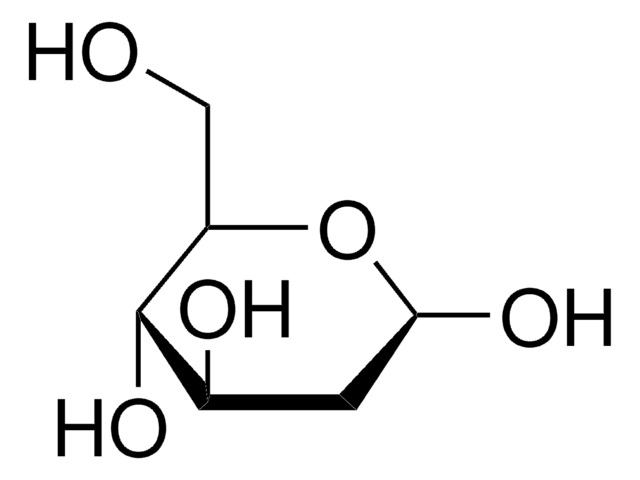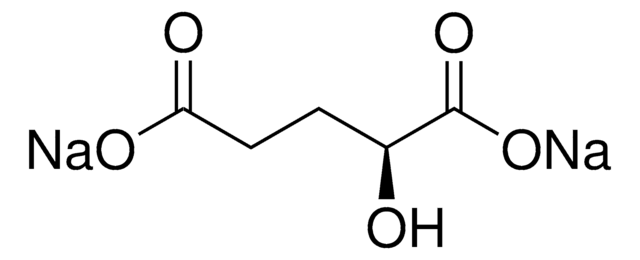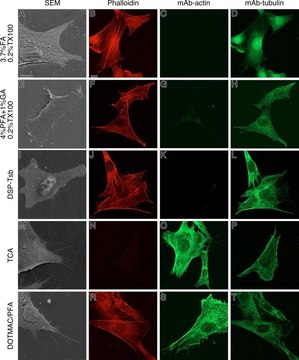All Photos(1)
Synonym(s):
2-Oxo-pentanedioic acid 5-ethyl ester 1-(3-trifluoromethyl-benzyl) ester, 5-Ethyl 1-(3-(trifluoromethyl)benzyl) 2-oxopentanedioate
Empirical Formula (Hill Notation):
C15H15F3O5
CAS Number:
Molecular Weight:
332.27
UNSPSC Code:
12352200
PubChem Substance ID:
NACRES:
NA.77
Recommended Products
Quality Level
Assay
≥95% (HPLC)
form
oil
color
colorless to light yellow
storage temp.
2-8°C
SMILES string
O=C(C(CCC(OCC)=O)=O)OCC1=CC=CC(C(F)(F)F)=C1
Biochem/physiol Actions
ETaKG is a cell-permeable, aqueous stable, bioavailable, non-toxic α-ketoglutarate/2-oxoglutarate (α-KG/2-OG) diester derivative that readily undergoes hydrolysis by cytosolic esterases to α-KG. The monoester analog, TaKG is also membrane permeant. ETaKG elevates intracellular [α-KG] by ~15-fold in a prologned fashion, destabilizes HIF-1α/2α and reactivates prolyl hydroxylases (PHDs) in hypoxic HCT116, A431 and RPE cells at 2 mM. Further, shown to selectively trigger PHD-dependent cell death in hypoxic cells and decreases cellular [ATP] and glucose uptake. ETaKG has shown to reduce glucose metabolism, elevate [α-KG] levels and suppress A375 xenograft tumor growth (750 mg/kg of mice, p.o., q.d., 14 days). Also, induces mTORC1 lysosomal translocation and stimulates mTORC1 activity in the absence of glutaminolysis in U2OS cells.
WGK
WGK 3
Flash Point(F)
Not applicable
Flash Point(C)
Not applicable
Regulatory Information
新产品
Certificates of Analysis (COA)
Search for Certificates of Analysis (COA) by entering the products Lot/Batch Number. Lot and Batch Numbers can be found on a product’s label following the words ‘Lot’ or ‘Batch’.
Already Own This Product?
Find documentation for the products that you have recently purchased in the Document Library.
Hanumantha Rao Madala et al.
Cancer research, 80(17), 3492-3506 (2020-07-12)
Under conditions of inherent or induced mitochondrial dysfunction, cancer cells manifest overlapping metabolic phenotypes, suggesting that they may be targeted via a common approach. Here, we use multiple oxidative phosphorylation (OXPHOS)-competent and incompetent cancer cell pairs to demonstrate that treatment
Our team of scientists has experience in all areas of research including Life Science, Material Science, Chemical Synthesis, Chromatography, Analytical and many others.
Contact Technical Service

